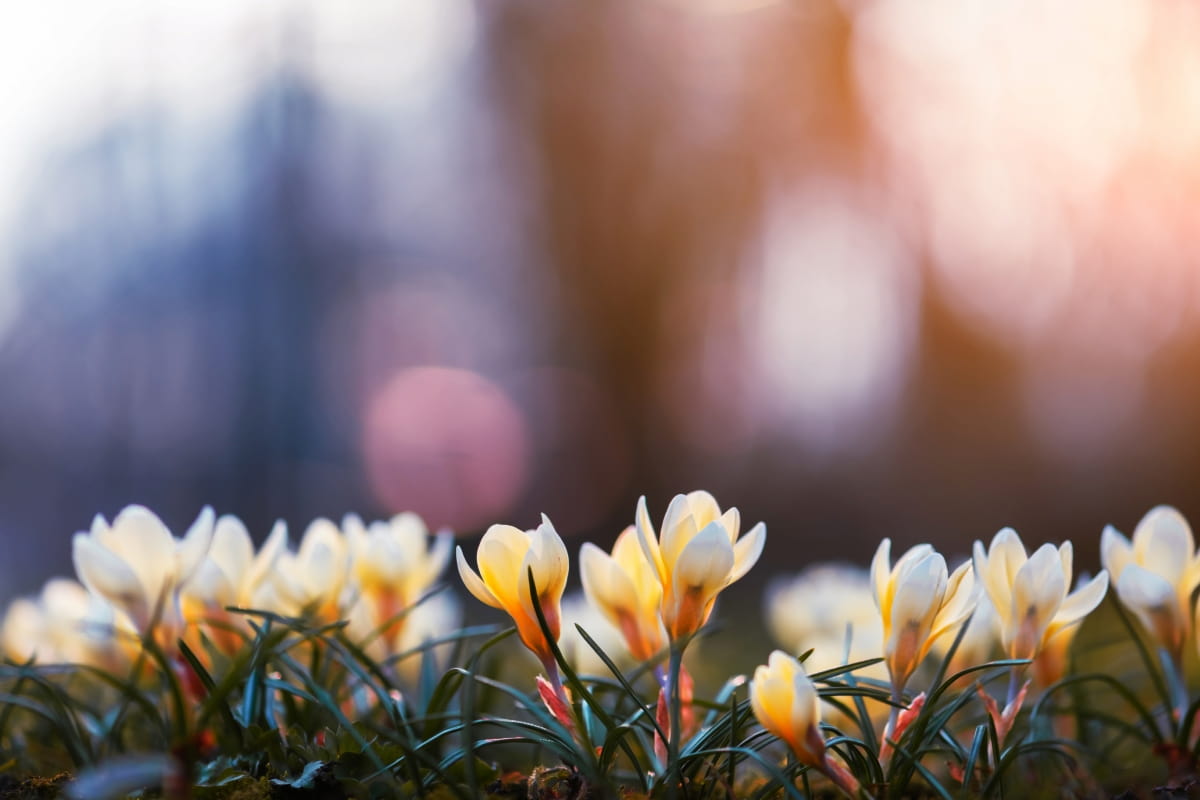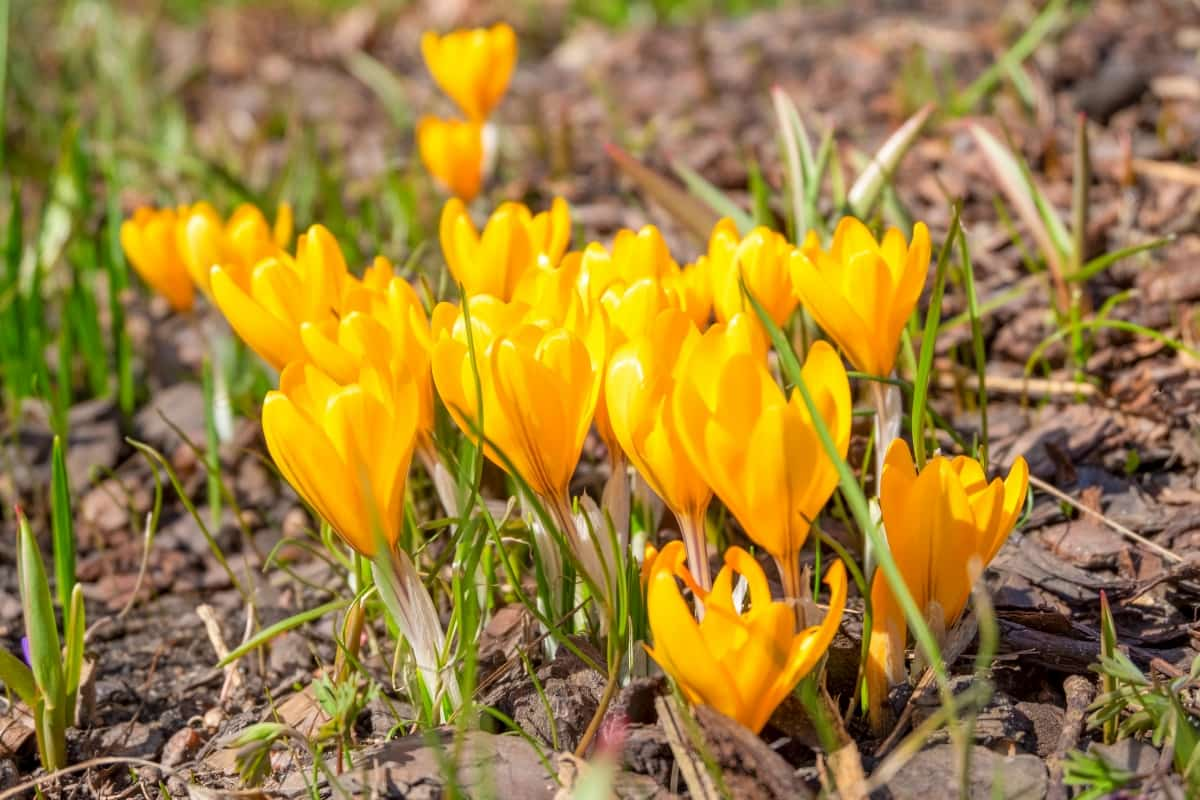Commercial farming of Saffron involves cultivating different varieties of this precious spice in various regions worldwide. Each variety possesses unique characteristics that contribute to its flavor profile and market demand. Each variety brings its own unique set of characteristics and flavors to the table, allowing farmers to cater to a diverse array of preferences. It is a highly prized spice that is known for its distinct flavor.

Different Varieties of Saffron
Kashmiri Saffron: Unraveling the Richness of Indian Saffron
Known for its vibrant color and exquisite flavor, this variety is considered one of the finest in the world. Grown in high-altitude regions with specific soil and climate conditions, these delicate flowers require skilled farmers to cultivate. Its vibrant crimson threads hold within them a richness that can only be found in this enchanting region.
The farming conditions in Kashmir contribute to the exceptional quality of their Saffron. The cold winters and moderate summers create an ideal climate for cultivation, allowing the flowers to bloom luxuriantly during autumn. This careful nurturing results in robust stigmas that are hand-picked with utmost precision.
Spanish Saffron: A Deep Dive into Spain’s Sought-After Spice
The main reason for growing Spanish Saffron is its unique climate and soil conditions in which it is grown. The arid lands of the La Mancha region provide ideal growing conditions, resulting in Saffron with intense flavor and aroma. It all begins with the perfect growing conditions found in the La Mancha region of Spain.
The distinct characteristics of Spanish Saffron can be attributed to its unique crocus flower, known as Crocus sativus. These flowers produce three bright red stigmas that are dried to preserve their flavor and aroma. The process of cultivating Spanish Saffron requires precision and expertise. Skilled farmers meticulously tend to each plant, ensuring optimal growth and maximum yield.
Harvesting is done by hand, making it a labor-intensive task that contributes to the exclusivity of this spice. Once harvested, Spanish Saffron undergoes rigorous quality testing before being packaged for distribution. Its deep red threads are prized not only for their vibrant hue but also for their strong aroma and distinctive taste.
Iranian Saffron: Understanding the Pinnacle of Saffron Production
The favorable climate and geographical conditions in Iran contribute to the cultivation of high-quality Saffron. The dry summers and cold winters create an ideal environment for this delicate spice to flourish. Additionally, the rich soil provides essential nutrients that enhance the flavor profile of Iranian Saffron. Skilled farmers hand-pick each delicate stigma from thousands of flowers, ensuring only the best strands make it into your kitchen.
Greek Saffron: Exploring the Unique Flavors of Greek Red Gold
The country’s mountainous terrain and Mediterranean climate create the perfect environment for cultivating high-quality Saffron. The rich volcanic soil adds depth and complexity to the flavor, resulting in a truly exceptional spice. The growing conditions in Greece contribute to the exceptional quality of their Saffron. The region’s mountainous terrain, fertile soil, and mild climate provide the perfect environment for cultivation.
In case you missed it: Maximizing Yield: Common Mistakes to Avoid in Saffron Farming

Moroccan Saffron: Delving into North Africa’s Exquisite Spice
The unique climate and soil conditions of Morocco contribute to the flavors and aromas found in their Saffron. Known for its unique flavor profile and vibrant color, Moroccan Saffron has captivated culinary enthusiasts across the globe. Grown in the Atlas Mountains, this exquisite spice thrives in the region’s arid climate and well-drained soil.
The cool nights and hot days provide ideal conditions for cultivating high-quality Saffron threads that are renowned for their potency. The process of harvesting Moroccan Saffron is labor-intensive as each delicate flower must be hand-picked before sunrise when they bloom. The crimson stigmas are then carefully separated by skilled growers who know how to handle this precious spice with utmost care.
Italian Saffron: Discovering the Elegance of Italian Red Gold
The region of Abruzzo, in particular, is known for producing some of the finest Saffron in the country. The rich soil, combined with ample sunshine, creates an environment that allows the delicate flowers to flourish. The growing conditions in Italy play a crucial role in producing this exquisite spice.
Nestled between the Apennine Mountains and the Mediterranean Sea, the fertile soil and optimal climate provide an ideal environment for cultivating Saffron. The region of Abruzzo, known as the “Saffron Valley,” is particularly famous for producing top-quality Italian Saffron. Italian Saffron stands out with its distinct aroma and delicate taste profile.
Afghan Saffron: Unveiling the Aromatic Treasures of Afghanistan
Afghanistan enjoys long, hot summers and cold winters, creating an ideal environment for Saffron cultivation. The high-altitude regions such as Herat province are particularly renowned for their Saffron production. Here, farmers carefully tend to their precious purple crocus flowers, which bloom in autumn. The process of harvesting Saffron involves picking each delicate stigma by hand early in the morning when they are at their most fragrant. This labor-intensive method ensures that only the finest strands make it into every batch of Afghan Saffron.
American Saffron: Exploring the Lesser-Known Spice from the U.S.
In recent years, American farmers have been experimenting with growing Saffron and have found success in regions with Mediterranean climates. The cool winters and hot, dry summers provide the ideal conditions for cultivating this delicate spice. The main aspect of American Saffron is that it is primarily harvested by hand. This labor-intensive process ensures that only the highest quality strands make their way into your dishes. Plus, supporting local farmers by purchasing American Saffron helps boost the domestic economy.
New Zealand Saffron: Embracing the Distinctive Qualities of Kiwi Saffron
The cool climate and fertile soil of New Zealand provide optimal growing conditions for Saffron cultivation. The purity of the air and pristine environment contribute to the development of intensely flavored Saffron strands. Kiwi Saffron is revered for its distinctive taste profile. In addition to its remarkable flavor, New Zealand’s commitment to sustainable farming practices sets its Saffron apart from others.
In case you missed it: Saffron Farming in Greenhouses: Benefits, Considerations, and Best Practices

Cultivated using organic methods without any harmful chemicals or pesticides, Kiwi Saffron offers consumers peace of mind, knowing they are enjoying a natural product that also supports environmental conservation efforts.
Australian Saffron: Navigating the World of Saffron Down Under
In this vast and diverse continent, Saffron farmers face distinct challenges and opportunities. The climate varies from region to region, providing different growing conditions for this precious spice. The main advantage that Australian Saffron holds over other varieties is its exceptional purity. With strict regulations enforced by governing bodies like The Australian Saffron Association, consumers can trust in the quality and authenticity of their purchase.
Another interesting aspect of Australian Saffron is its relatively small scale of production compared to other countries. Australian farmers typically plant their bulbs during late autumn or early winter when the temperatures start to cool down. The corms are carefully spaced out in rows within well-prepared beds or raised garden beds. During springtime, when the weather begins to warm up again, shoots will emerge from the corms, signaling that it’s time for harvest season.
Frequently Asked Questions (FAQ) on Different Varieties of Saffron
Which Factors Should Be Considered When Choosing a Saffron Variety for Commercial Farming?
Farmers should consider climate suitability, soil conditions required by each variety, and market demand for specific types of Saffron in their region or country.
Are There Any Specific Practices Involved in Cultivating Different Saffron Varieties?
Yes. Each variety may require specific planting methods and growing conditions. Proper irrigation systems, along with well-drained soil, play an essential role in successful cultivation.
Can Multiple Saffron Varieties Be Grown Together on the Same Farm?
It’s possible to grow multiple varieties together; however, careful planning is necessary to ensure they receive adequate space and meet their requirements.
In case you missed it: How to Propagate Saffron Bulbs: Best Techniques for Sprouting Saffron Bulbs

Conclusion
Commercial Saffron farming requires careful consideration of the different varieties available to maximize both yield and quality. By cultivating multiple Saffron varieties, farmers can tap into various markets and meet the demands of other culinary traditions around the world. With its vibrant color, distinct aroma, and exquisite flavor, Saffron has been coveted by cultures around the globe for centuries.
- Ultimate Guide to Ossabaw Island Hog: Breeding, Raising, Diet, and Care
- Ultimate Guide to Juliana Pig: Raising Facts, Size, Diet, Care, and Lifespan
- Raising Lleyn Sheep: Disadvantages, Price, Uses, Characteristics, and Care
- Ultimate Guide to Meishan Pig: Breed Facts, Breeding, Raising, and Care
- Ultimate Guide to Teacup Pigs: Raising, Diet, Lifespan, Cost, and Care
- Guide to Raising Poll Dorset Sheep: Facts, Profile, Characteristics, Uses, and Care
- Ultimate Guide to Bighorn Sheep: Characteristics, Diet, Lifespan, Breeding, and Lifecycle
- Ultimate Guide to Raising Katahdin Sheep: Farming Facts, Breed Profile, Uses, and Care
- Ultimate Guide to Raising Oreo Cows: Belted Galloways Farming Facts, Profile, Uses, and Care